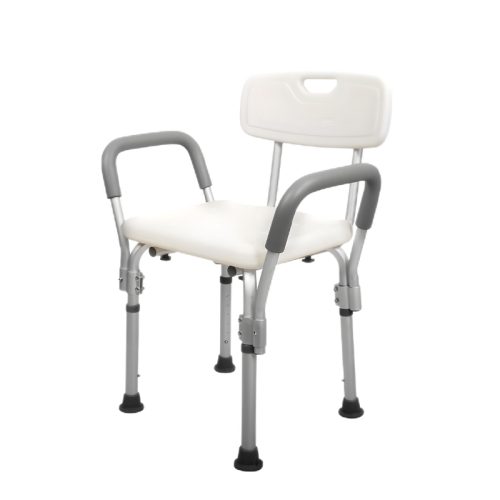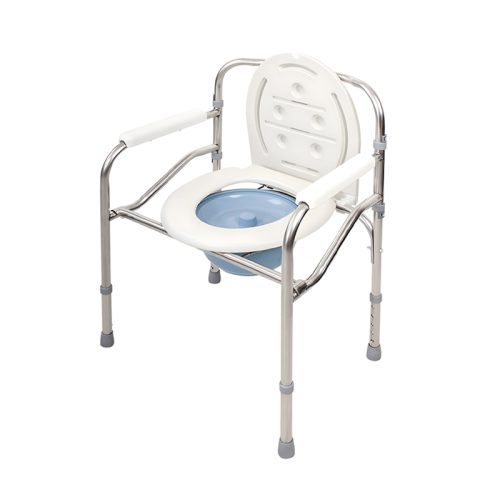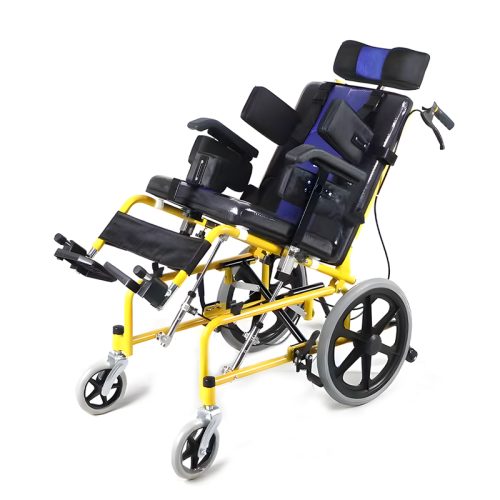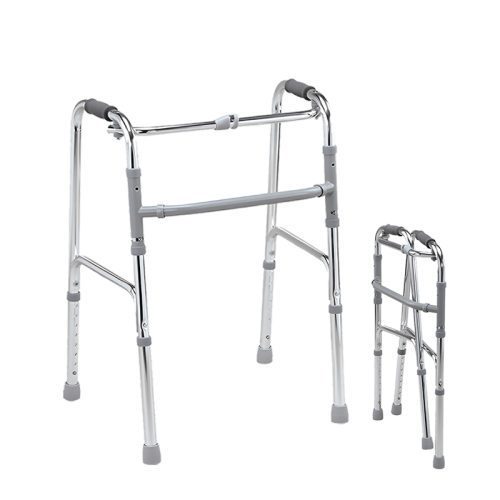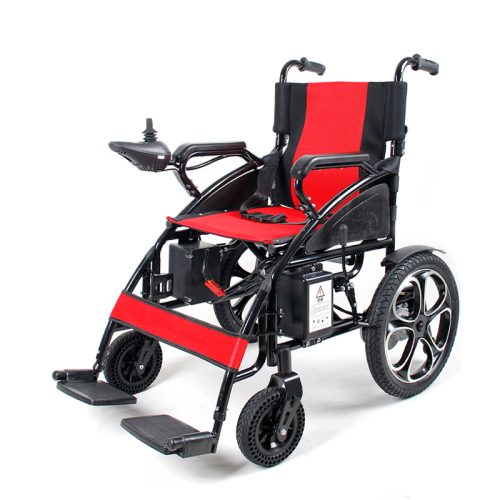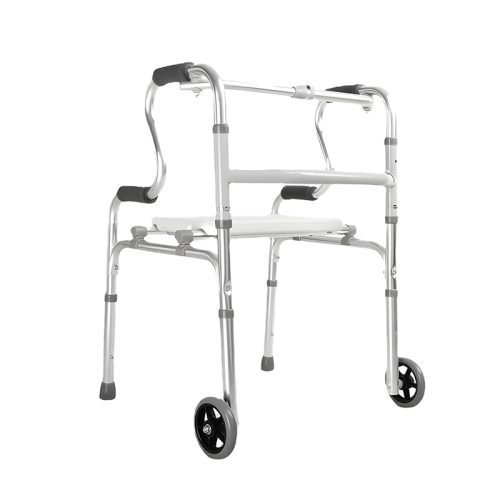
- Rollstuhl
Rollstuhlrampen für Wohnhäuser: Mehr Barrierefreiheit und Unabhängigkeit
- Unter kelingmedical
### Warum Rollstuhlrampen für Häuser unerlässlich sind
#### 1. **Verbesserte Zugänglichkeit für Rollstuhlfahrer**
Wohnungen benötigen Rollstuhlrampen in erster Linie, um die Zugänglichkeit für die Bewohner zu verbessern. Die häusliche Mobilität von Menschen mit körperlichen Beeinträchtigungen wird durch Hindernisse wie Treppen und Türschwellen eingeschränkt. Eine Rollstuhlrampe beseitigt die üblichen Zugangshindernisse, so dass Rollstuhlfahrer alle Bereiche ihres Hauses innen und außen sicher erreichen können.
- **Beispiel: Menschen, die auf einen Rollstuhl angewiesen sind, erhalten durch den Einbau einer Rampe vollen Zugang zu allen Bereichen ihrer Wohnung.
#### 2. **Sicherheit und Unabhängigkeit**
Für Personen mit eingeschränkter Mobilität besteht Gefahr, wenn sie sich ohne Hilfe auf unebenen Flächen bewegen oder Treppen steigen müssen. Rollstuhlrampen bieten mit ihren sanften Neigungen eine sichere Option, die dazu beiträgt, das Risiko von Stürzen und Verletzungen zu minimieren. Rampen ermöglichen es den Nutzern, sich unabhängig zu bewegen, ohne auf die Hilfe anderer angewiesen zu sein.
- **Beispiel: Ältere Menschen und Patienten nach einer Operation bewahren ihre Unabhängigkeit durch eine sichere Navigation zu Hause, wenn sie Rollstuhlrampen benutzen, da sie nicht mehr auf die ständige Hilfe von Familienmitgliedern angewiesen sind.
#### 3. **Benutzerfreundlichkeit**
Bei der Konstruktion von Rollstuhlrampen steht die Zugänglichkeit für den Benutzer im Vordergrund, damit sich Menschen mit eingeschränkter Körperkraft oder Geschicklichkeit leichter fortbewegen können. Für eine reibungslose Bewegung zwischen den Bereichen sind Rollstuhlrampen erforderlich, die die richtige Neigung, Beschaffenheit und Haltbarkeit aufweisen, unabhängig davon, ob es sich um einen manuellen oder motorisierten Rollstuhl handelt.
- **Beispiel: Eine tragbare Rampe in Leichtbauweise mit rutschfester Oberfläche ermöglicht es Rollstuhlfahrern, vom Bürgersteig aus selbstständig auf ihre Veranda zu gelangen.
#### 4. **Einhaltung der Zugänglichkeitsstandards**
Bauvorschriften und Zugänglichkeitsnormen in verschiedenen Regionen schreiben vor, dass Wohnungen für Rollstuhlfahrer zugänglich sein müssen. Wenn Händler Rampen liefern, die den Normen für Barrierefreiheit entsprechen, liefern sie Produkte, die die Mobilität verbessern und gleichzeitig die gesetzlichen Anforderungen erfüllen. Anbieter, die Wohnmärkte bedienen, müssen Vorschriften wie den Americans with Disabilities Act (ADA) einhalten.
- **Beispiel: Installieren Sie Rampen mit dem ADA-zugelassenen Neigungsverhältnis von 1:12, um die ADA-Normen in Wohngebäuden zu erfüllen.
—
### Arten von Rollstuhlrampen für Wohnhäuser
Hauseigentümer können zwischen verschiedenen Rollstuhlrampen wählen, die je nach den individuellen Bedürfnissen und dem Grundriss ihres Hauses unterschiedliche Vorteile bieten. Indem sie sich über die verfügbaren Optionen informieren, können die Anbieter die für ihre Kunden am besten geeigneten Lösungen empfehlen.
#### 1. **Schwellenwertrampen**
Schwellenrampen eignen sich am besten für Wohnbereiche mit kleinen Stufen oder Türrahmen, die den Zugang für Rollstuhlfahrer blockieren. Schwellenrampen helfen dabei, verschiedene Oberflächen, einschließlich Türöffnungen, miteinander zu verbinden, was Rollstuhlfahrern einen problemlosen Übergang ermöglicht, ohne dass sie ihre Stühle anheben müssen.
- **Verwendungszweck: Schwellenrampen ermöglichen Rollstuhlfahrern das problemlose Überqueren von Hauseingängen, indem sie unter Türöffnungen angebracht werden, um Lücken zu überbrücken.
#### 2. **Portable Rampen**
Tragbare Rampen sind leicht zu transportieren, da sie ein geringes Gewicht haben und sich auch gut verstauen lassen. Diese Rampen sind tragbar, da sie sich zusammenklappen lassen, was sie ideal für Personen macht, die kurzfristig Zugang zu verschiedenen Bereichen ihres Hauses benötigen oder häufig unterwegs sind.
- **Gebrauchsfall: Tragbare Rampen ermöglichen es den Nutzern, sie bei Besuchen bei Freunden mitzunehmen und sie zum Einsteigen in Fahrzeuge zu verwenden, bevor sie zusammengefaltet und gelagert werden, wenn sie nicht benötigt werden.
#### 3. **Dauerhafte Rampen**
Hausbesitzer, die dauerhafte Lösungen benötigen, sollten dauerhafte Rampen als beste Option in Betracht ziehen. Hauseigentümer, die dauerhafte Lösungen benötigen, verwenden fest installierte Rampen aus langlebigen Materialien wie Beton, Aluminium und Stahl. Permanente Rampen sind eine zuverlässige Lösung für Wohnhäuser, da sie sowohl dem regelmäßigen Verkehr als auch extremen Wetterbedingungen standhalten.
- **Anwendungsfall: Rollstuhlfahrer erhalten ununterbrochenen Zugang durch eine permanente Rampe, die entweder an der Haustür oder an einer Hausseite installiert ist.
#### 4. **Fahrzeugrampen**
Fahrzeugrampen helfen Hausbesitzern, ihren Rollstuhl in ihr Fahrzeug zu laden, egal ob es sich um einen Pkw, einen Lieferwagen oder einen Lkw handelt. Diese Rampen ermöglichen es den Nutzern, ihren Rollstuhl selbst und ohne Hilfe zu be- und entladen, was eine unabhängige Fahrt ermöglicht.
- **Nutzungsfall: Der Nutzungsfall einer Fahrzeugrampe ermöglicht es Rollstuhlfahrern, ihre Mobilitätshilfe für die Fahrt selbst in den Kofferraum ihres Autos zu laden.
#### 5. **Modulare Rampen**
Modulare Rampen bieten anpassungsfähige Lösungen, die sich sowohl an die individuellen Bedürfnisse der Nutzer als auch an die architektonische Gestaltung ihrer Häuser anpassen lassen. Modulare Rampen bestehen in der Regel aus Aluminium oder Stahl und können in geraden, gebogenen oder mehrstufigen Strukturen angeordnet werden. Für Häuser mit komplexen Eingängen oder mehreren Ebenen sind modulare Rampen eine hervorragende Lösung.
- **Verwendungsfall: Eine modulare Rampe ermöglicht eine individuelle Anpassung für mehrstöckige Häuser mit verschiedenen Eingängen, um Rollstuhlfahrern einen reibungslosen Zugang an allen Punkten zu ermöglichen.
—
Es gibt mehrere Faktoren, die Händler bei der Auswahl geeigneter Rollstuhlrampen für Wohnungen berücksichtigen sollten.
Händler müssen bei der Auswahl von Rollstuhlrampen für den Hausgebrauch mehrere Aspekte berücksichtigen, damit die gewählte Rampe sowohl die Anforderungen der Benutzer als auch die Spezifikationen des Hauses erfüllt.
#### 1. **Länge und Steigungsverhältnis**
Die Rampe muss eine bestimmte Länge und Neigung aufweisen, um eine sichere und barrierefreie Nutzung zu ermöglichen. Zu steile Rampen können für die Benutzer schwierig zu befahren sein, während zu kurze Rampen keine ausreichende Neigung aufweisen. Für ein komfortables und sicheres Erlebnis sollte die Rampe einer 1: Um Sicherheit und Komfort zu gewährleisten, sollte die Rampe eine Neigung von 1:12 haben, d. h. jeder Anstieg von 1 Zoll erfordert eine Rampenlänge von 12 Zoll.
#### 2. **Gewichtskapazität**
Jede Rollstuhlrampe unterstützt unterschiedliche Gewichtsgrenzen, weshalb Sie eine Rampe auswählen müssen, die stark genug ist, um sowohl den Rollstuhl als auch den Benutzer sicher zu halten. Wählen Sie Rampen mit angemessenen Gewichtsgrenzen, um größere und schwerere Benutzer zu unterstützen.
#### 3. **Material Langlebigkeit**
Es gibt verschiedene Materialien für Rollstuhlrampen, die alle ihre eigenen Vorteile haben. Da Aluminiumrampen rostfrei sind und ein geringes Gewicht haben, eignen sie sich hervorragend für den Außenbereich. Rampen aus Stahl halten länger, haben aber ein höheres Gewicht als Rampen aus Holz, die zwar ansprechend aussehen, aber mehr Pflege benötigen.
#### 4. **Oberflächentextur**
Eine gut strukturierte Rampenoberfläche verhindert ein Ausrutschen, wenn die Bedingungen durch Regen oder Schnee nass sind. Strukturierte Oberflächen oder rutschfeste Beschichtungen auf Rampen erhöhen die Traktion und damit die Sicherheit der Benutzer.
—
## Schlussfolgerung
Eine Wohnung muss über Rollstuhlrampen verfügen, da sie Menschen mit Mobilitätseinschränkungen die Möglichkeit geben, sich sicher und unabhängig zu bewegen. Händler, die verschiedene Arten von Rollstuhlrampen anbieten, wie z. B. tragbare, permanente und modulare Rampen, können die unterschiedlichen Anforderungen ihrer Kunden an die Zugänglichkeit ihres Hauses erfüllen.
Anbieter, die die verschiedenen Rampentypen und ihre Leistungsfaktoren kennen, können erstklassige Produkte liefern, die die Lebensqualität behinderter Menschen verbessern. Ihre Lieferung von Rollstuhlrampen, die Sicherheitsstandards und Haltbarkeitskriterien erfüllen und gleichzeitig zugänglich sind, schafft eine integrative Gesellschaft für alle Menschen.
—
## FAQ
Welche Länge sollte eine Rollstuhlrampe für zu Hause haben?
Eine Rollstuhlrampe sollte einem 1: Die Konstruktion einer Rollstuhlrampe muss ein Neigungsverhältnis von 1:12 haben, was bedeutet, dass für jeden Zentimeter vertikalen Anstiegs eine Rampe benötigt wird, die 12 Zentimeter horizontal verläuft. Die Länge der Rampe richtet sich nach der Höhe der Schwelle oder Stufe.
Aluminium und Stahl sind aufgrund ihres geringen Gewichts und ihrer Langlebigkeit die besten Materialien für Rollstuhlrampen, während Rampen aus Holz für den privaten Gebrauch geeignet sind, aber regelmäßig gewartet werden müssen.
Viele Menschen entscheiden sich für Aluminium, weil es leicht ist und nicht rostet, und wählen Stahl, wenn sie eine höhere Festigkeit benötigen. Rollstuhlrampen aus Holz funktionieren gut in häuslicher Umgebung, müssen aber regelmäßig gewartet werden.
Eignen sich tragbare Rampen gut für den Einsatz in Wohngebieten?
Tragbare Rampen eignen sich gut für den Hausgebrauch, da sie vorübergehende Zugangslösungen für Menschen bieten, die viel unterwegs sind. Sie sind leicht und einfach zu lagern.
Welche Faktoren sollte ich bei der Auswahl der besten Rollstuhlrampe für das Haus meines Kunden berücksichtigen?
Beurteilen Sie die Stufenhöhe oder den Schwellenabstand zusammen mit der Gewichtskapazität des Benutzers und der Haltbarkeit des Materials, um festzustellen, ob die Rampe tragbar oder dauerhaft sein sollte.
Können Hausbesitzer Rollstuhlrampen selbst installieren, ohne professionelle Hilfe in Anspruch zu nehmen?
Die meisten tragbaren und modularen Rampen können von Hausbesitzern selbst installiert werden, doch dauerhafte Rampen erfordern oft eine professionelle Installation, insbesondere wenn bauliche Veränderungen erforderlich sind.
Hausbesitzer, die Rollstuhlrampen installieren, verbessern die Zugänglichkeit ihres Hauses und ermöglichen es den Menschen, unabhängig zu leben. Wenn die Kunden maßgeschneiderte Optionen für ihre spezifischen Anforderungen erhalten, werden ihre Wohnungen sicherer und für Menschen mit Mobilitätseinschränkungen besser zugänglich.
📧 E-Mail: inquiry@shkeling.com
🌐 Website: www.shkeling.com.cn
Wir freuen uns darauf, mit Ihnen eine erfolgreiche Partnerschaft aufzubauen!


